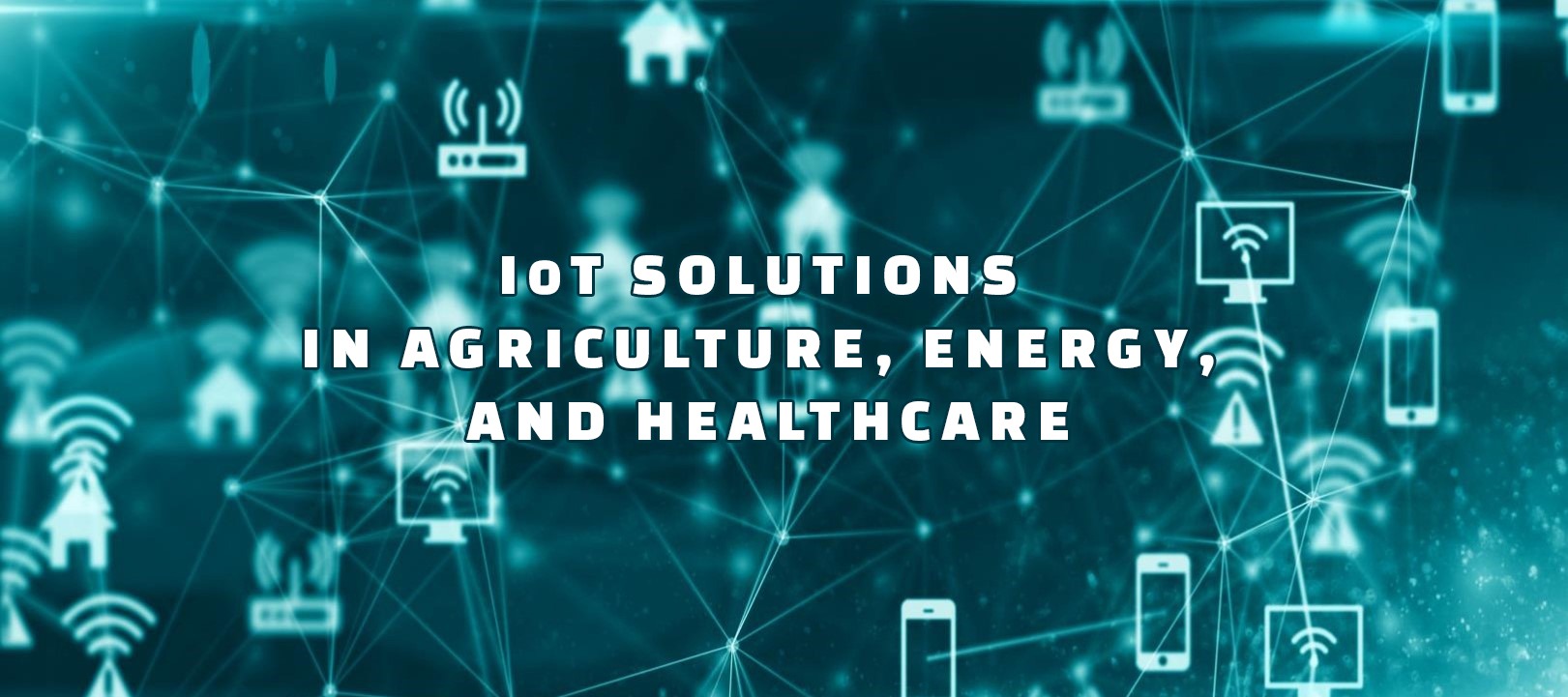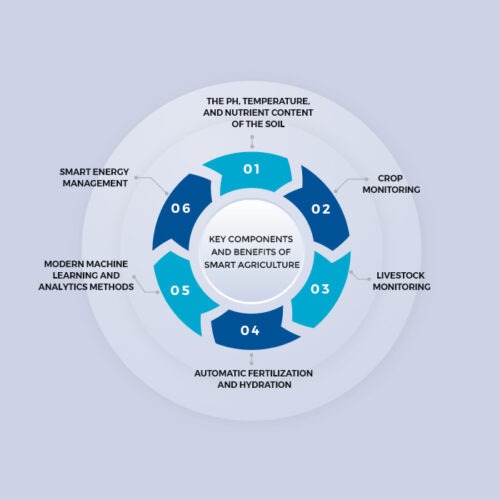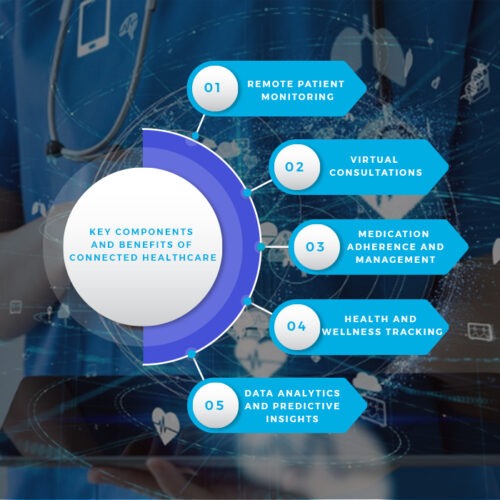
21 Jul Best IoT Solutions in Agriculture, Energy, and Healthcare
IoT solutions have been made possible by the Internet of Things IoT technology’s swift development in many different industries. Digital energy management, linked healthcare, and connected agriculture are three major IoT applications. In smart agriculture, IoT sensors and devices enable farmers to monitor soil conditions, crop health, and livestock, optimizing resource usage and enhancing productivity. Smart energy management harnesses IoT technology to monitor energy consumption, automate systems, and optimize energy usage, promoting sustainability and cost savings. Additionally, connected healthcare utilizes IoT devices and remote monitoring to enable virtual consultations, personalized care, and improved patient outcomes.
Smart Agriculture Also known as precision agriculture or smart farming, smart agriculture makes use of IoT technologies to improve production, streamline agricultural processes, and cut down on resource waste. In order to monitor and control many parts of farming operations, IoT sensors, devices, and data analytics are used.
Key Components and Benefits of Smart Agriculture
- The pH, temperature, and nutrient content of the soil: may all be monitored using IoT sensors that are buried there. Farmers are better able to plan drinking water usage, apply fertilizer, and maintain the health of their crops with the help of this information. By providing real-time insights into soil conditions, smart agriculture enables efficient resource utilization and improved crop yields.
- Crop Monitoring: IoT devices such as drones or satellite imaging systems equipped with sensors can capture data on crop growth, vegetation health, and pest infestations. This data, combined with advanced analytics, allows farmers to detect early signs of diseases, optimize pesticide usage, and implement targeted interventions for crop protection. Real-time crop monitoring enables proactive decision-making, reduces crop losses, and increases overall farm efficiency.
- Livestock Monitoring: IoT-enabled wearables and sensors can be used to monitor the health, behavior, and location of livestock. For example, wearable collars can track the activity levels and vital signs of animals. This data helps farmers detect signs of distress, monitor grazing patterns, and identify potential health issues. Farmers can improve breeding and management methods, cut damages, and increase the welfare of livestock by digitally and in actual time tracking their animals.
- Automatic Fertilization and Hydration: Based on data in real-time, IoT-based solutions can replace both irrigation and fertilization methods. Soil moisture sensors provide information on the exact water requirements of crops, triggering irrigation systems only when necessary. Similarly, by analyzing soil nutrient levels, IoT systems can optimize the application of fertilizers, reducing waste and promoting sustainable farming practices.
- Modern machine learning and analytics methods are used to process the data obtained by IoT sensors and devices. Farmers may make use of these insights to improve their agricultural methods and make data-driven decisions. Farmers may better plan their resource allocation, anticipate production changes, and increase their overall farm profitability by using predictive analytics.
- Smart Energy Management: In residential, commercial, and industrial settings, smart energy management uses IoT technologies to optimize energy use, boost effectiveness, and cut waste. In order to track, assess, and manage energy use, IoT devices, data analytics, and control systems are integrated.

Key components and benefits of smart energy management
- Smart Metering: IoT-enabled smart meters replace traditional electricity meters and provide real-time monitoring of energy usage. These meters collect data on electricity consumption patterns, peak usage times, and power quality. The data is transmitted to utility companies or users, enabling them to monitor and analyze their energy usage in detail.
- Energy Monitoring and Control: To measure and monitor energy use at specific devices or appliances, IoT devices can be placed, such as smart plugs, switches, and energy monitoring sensors. Users may measure and regulate their consumption of electricity in real-time by accessing this data via mobile apps or web portals. They can identify energy-intensive appliances, set energy-saving preferences, and receive alerts or recommendations for optimizing energy consumption.
- Demand Response: IoT solutions enable demand response programs where energy providers can remotely adjust electricity usage during peak demand periods. This allows for load balancing and grid optimization, ensuring a stable and reliable energy supply. Users can also participate in demand response programs and receive incentives for reducing their energy consumption during peak hours.
- Energy Efficiency and Optimization: IoT technology enables the integration of smart home automation systems with energy management. Users can automate lighting schedules, adjust thermostat settings based on occupancy, and control appliances remotely.
- Renewable Energy Integration: Connectivity and control of sources of clean energy, such as wind turbines, solar power plants, and storage devices for energy, are made easier by IoT technologies. IoT devices can track energy output, storage levels, and trends in usage, enabling users to take advantage of the advantages of green energy installations and enhance domestic consumption.
- Analytics and Insights: Data analysis and machine learning techniques are used to analyses and evaluate the data collected by IoT devices. This gives clients useful knowledge about their habits, trends, and areas for growth in terms of how they utilize energy. To decrease wasted energy and reduce costs, users may access energy reports, get specific advice, and make smart choices.
- Connected Healthcare: IoT technology is used in linked healthcare, usually referred to as healthcare or online medical care, to provide monitoring of patients at home, virtual visits, and specialized healthcare management. It makes use of gadgets, sensors, and IoT devices to gather and send real-time health data, allowing medical professionals to remain watch on patients from a distance and make quick treatments.

Key components and benefits of connected healthcare
- Remote Patient Monitoring: is possible via IoT gadgets and wearables, which can collect data on patients’ vital signs, BP, glucose levels, and fitness levels. Healthcare providers can use this information to remotely monitor patients’ health states and keep tabs on any changes or anomalies by receiving this data. especially for patients with persistent illnesses or seniors, remotely tracking patients promotes early diagnosis of health concerns, decreases the need for frequent hospital visits, and enhances the health of patients.
- Virtual Consultations: IoT facilitates virtual consultations and telemedicine services, where patients can remotely connect with healthcare professionals using video conferencing or mobile apps. This makes healthcare quicker and easily accessible, particularly in rural or weak places. Regular health screenings, periodic visits, and non-emergency medical advice are all possible online to give patients prompt healthcare without having them visit an establishment.
- Medication Adherence and Management: IoT-enabled devices can help improve medication adherence and management. Smart pill dispensers or medication reminder systems can send alerts and notifications to patients when it is time to take their medications. IoT-enabled sensors can track medication usage and adherence, providing data to healthcare providers and caregivers for better monitoring and intervention.
- Health and Wellness Tracking: IoT devices may track behaviors, sleep cycles, and overall health. Such as fitness trackers and smartwatches. People can monitor their physical activity, set up fitness goals, and get specific guidance on how to lead an active life. IoT devices may also work along with other medical apps and systems to build a full view of a person’s health.
- Data Analytics and Predictive Insights: The data collected from IoT devices in connected healthcare is analyzed using data analytics and machine learning algorithms. This helps identify patterns, trends, and potential health risks, enabling healthcare professionals to make more accurate diagnoses and provide personalized treatment plans. Good medical results can be gained through the use of advanced analytics to predict risks to health, detect alert signals, and take precautions.

Conclusion
In the end, an era of imagination, efficacy, and related has been set in by the embrace of IoT solutions across many sectors. Farmers using smart agriculture have access to immediate information and insights that help them make sound choices and improve their methods to improve crops and resource conservation. By allowing users to monitor and regulate their use of energy, smart energy systems help to save waste and promote globally ethical habits.
Connected healthcare revolutionizes patient care by leveraging IoT devices for remote monitoring, virtual consultations, and personalized treatment plans, improving access to healthcare and enhancing patient outcomes. IoT has the ability to change firms and enhance lives as it grows. The adoption of IoT technology sets in the possibility of a linked, intelligent, and resilient future.